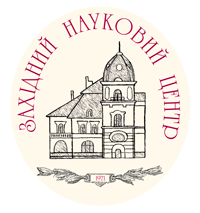Oksana DEMCHYNA1, Galyna KHOVANETS’1, Tetyana POKYNBRODA1, Nataliia KORETSKA1, Andrii FEDORCHUK1, Pavlo LYUTYY2, Mariana SHEPIDA2, Andriy KYTSYA1
1Department of Physical Chemistry of Fossil Fuels of the Institute of Physical-Organic Chemistry and Coal Chemistry named after L. M. Lytvynenko of the National Academy of Sciences of Ukraine, Naukova Str., 3a, 79060 Lviv, Ukraine e-mail: demchynaoksana@ukr.net
2Lviv Polytechnic National University, Bandery Str., 12, 79013 Lviv, Ukraine
DOI: https://doi.org/10.37827/ntsh.chem.2025.78.155
CATALYTIC AND ANTIMICROBIAL ACTIVITY OF Cu2O NANOPARTICLES IMMOBILIZED ON ZEOLITE MATRIX
Nanocomposites based on natural and synthetic zeolites and copper, which are characterized by a high specific surface area and are resistant to aggressive environments and successfully combine catalytic and antimicrobial properties, are a promising material for complex technologies for wastewater and/or natural water treatment. The study of various composite materials in which metal nanoparticles are immobilized on the surface of inert fillers allows for the production of relatively cheap and effective materials while preserving the unique properties of nanoparticles. Therefore, the aim of this work was to study the adsorption of copper ions by synthetic zeolite of the Na-A brand in order to optimize the conditions for the synthesis of metal-zeolite nanocomposites and to study the physicochemical, catalytic and antimicrobial properties of the obtained nanostructures. Cu2O nanoparticles were obtained by reducing Cu2+ ions adsorbed on zeolite with glucose in an alkaline medium. It was shown that the adsorption isotherm of Cu2+ ions is described by the Langmuir equation, and the ion exchange capacity of the zeolite is 1 mmol/g. Using scanning electron microscopy (SEM), X-ray energy dispersive spectroscopy (EDS), and X-ray powder diffraction (XRD), it was found that the obtained nanoparticles are evenly distributed on the surface of the carrier, and their size is 20–50 nm. Using the example of the oxidation reaction of methylene blue dye as a model organic pollutant of wastewater by hydrogen peroxide, the catalytic activity of the obtained composite was investigated and the effective rate constant of the process was calculated. It was found that the catalytic oxidation of the MB dye is described by second-order kinetic reaction equations. It has been shown that copper nanoparticles immobilized on the surface of zeolite exhibit fungicidal activity against Candida utilis, Aspergillus niger and antibacterial activity against Staphylococcus aureus.
Keywords: nanocomposite, Zeolite–Cu2O, adsorption, Fenton system, antimicrobial activity.
References:
-
1. Androshchuk H. O., Yamchuk A. V., Bereznyak N. V., Kvasha T. K., Musina L. A., Novitska H. V. Nanotechnology in
the ХХІ century: strategic priorities and market approaches to implementation. Kyiv: UkrINTEI, 2011. 272 p. (in
Ukrainian).
2. Xu M., Wu C., Zhou Y. Advancements in the Fenton Process for Wastewater Treatment. In book: Advanced Oxidation
Processes - Applications, Trends, and Prospects. Ch. 4. IntechOpen Ltd, 2020.
(https://doi.org/10.5772/intechopen.90256).
3. Hussain S., Aneggi E., Goi D. Catalytic activity of metals in heterogeneous Fenton-like oxidation of wastewater
contaminants: a review. Environ. Chem. Lett. 2021. Vol. 19. P. 2405–2424.
https://doi.org/10.1007/s10311-021-01185-z.
4. Makido O., Khovanets’ G., Kochubei V., Yevchuk I. Nanostructured Magnetically Sensitive Catalysts for the
Fenton System: Obtaining, Research, Application. Chem. Chem. Techn. 2022. Vol. 16(2). P. 227–236.
https://doi.org/10.23939/chcht16.02.227.
5. Medvedevskykh Y., Makido O., Khovanets’ G., Karpenko O., Pokynbroda T., Yevchuk I. Kurylets O. Investigation of
the Adsorption Properties of a New Composite Catalyst for the Fenton System. Chem. Chem. Technol. 2024. Vol.
18(4). P. 474–484. https://doi.org/10.23939/chcht18.04.474.
6. Stoimenov P. K., Klinger R. L., Marchin G. L., Klabunde K. J. Metal Oxide Nanoparticles as Bactericidal Agents.
Langmuir. 2002. Vol. 18(17). P. 6679–6686. http://doi.org/10.1021/la0202374.
7. Chen C. Y., Chiang C. L. Preparation of cotton fibers with antibacterial silver nanoparticles. Mater. Lett.
2008. Vol. 62(21). P. 3607–3609. http://doi.org/10.1016/j.matlet.2008.04.008.
8. Santhoshkumar J., Agarwal H., Menon S., Rajeshkumar S., Venkat Kumar S. A Biological Synthesis of Copper
Nanoparticles and Its Potential Applications. In Green Synthesis, Characterization and Applications of
Nanoparticles. Amsterdam: Elsevier. 2019. P. 199–221. https://doi.org/10.1016/B978-0-08-102579-6.00009-5.
9. Kordala N., Wyszkowski M. Zeolite Properties, Methods of Synthesis, and Selected Applications. Molecules. 2024.
Vol. 29(5). Art. ID: 1069. https://doi.org/10.3390/molecules29051069.
10. Hu Z., Han J., Wei Y., Liu Z. Dynamic Evolution of Zeolite Framework and Metal-Zeolite Interface. ACS Catal.
2022. Vol. 12(9). P. 5060–5076. https://doi.org/10.1021/acscatal.2c01233.
11. Xu H., Wu P. New progress in zeolite synthesis and catalysis. Nat. Sci. Rev. 2022. Vol. 9(9). Art. ID:
nwac045. https://doi.org/10.1093/nsr/nwac045.
12. Chai Y., Dai W., Wu G., Guan N., Li L. Confinement in a Zeolite and Zeolite Catalysis. Acc. Chem. Res. 2021.
Vol. 54(13). P. 2894–2904. https://doi.org/10.1021/acs.accounts.1c00274.
13. Issaabadi Z., Nasrollahzadeh M., Sajadi S. M. Green synthesis of the copper nanoparticles supported on
bentonite and investigation of its catalytic activity. J. Clean. Product. 2017. Vol. 142(4). P. 3584–3591.
https://doi.org/10.1016/j.jclepro.2016.10.109.
14. Shameli K., Ahmad M. B., Zargar M., Yunus W. M. Z. W., Ibrahim N. A. Fabrication of silver nanoparticles doped
in the zeolite framework and antibacterial activity. Int. J. Nanomed. 2011. Vol. 6. P. 331–341.
https://doi.org/10.2147/IJN.S16964.
15. Llorens A., Lloret E., Picouet P. A., Trbojevich R., Fernandez A. Metallic-based micro and nanocomposites in
food contact materials and active food packaging. Trends Food Sci. Technol. 2012. Vol. 24(1). P. 19–29.
https://doi.org/10.1016/j.tifs.2011.10.001.
16. Salavati-Niasari M., Salimi Z., Bazarganipour M., Davar F. Synthesis, characterization and catalytic oxidation
of cyclohexane using a novel host (zeolite-Y)/guest (binuclear transition metal complexes) nanocomposite
materials. Inorg. Chim. Acta. 2009. Vol. 362(10). P. 3715–3724. https://doi.org/10.1016/j.ica.2009.04.028.
17. Ghanbari D., Sharifi S., Naraghi A., Nabiyouni G. Photo-degradation of azo-dyes by applicable magnetic zeolite
Y–Silver–CoFe2O4 nanocomposites. J. Mater. Sci.: Mater. Electron. 2016. Vol. 27(5). P. 5315–5323.
https://doi.org/10.1007/s10854-016-4430-8.
18. Danish M., Gu X., Lu S., Ahmad A., Naqvi M., Farooq U., Xue Y. Efficient transformation of trichloroethylene
activated through sodium percarbonate using heterogeneous zeolite supported nano zero valent iron-copper
bimetallic composite. Chem. Eng. J. 2017. Vol. 308. P. 396–407. https://doi.org/10.1016/j.cej.2016.09.051.
19. Dzyazko Yu. S., Rozhdestvenka L. M., Palchik O. V., Kudelko K. O., Yatsenko T. V., Ponomareva L. M.
Zeolite-based nanocomposite modified with hydrated iron oxide (III) for removal of heavy metals. Ukr. Chem. J.
2022. Vol. 88(3). P. 28–39. https://doi.org/10.33609/2708-129X.88.03.2022.28-39
20. Aeenjan F., Javanbakht V. Methylene blue removal from aqueous solution by magnetic
clinoptilolite/chitosan/EDTA nanocomposite. Res. Chem. Intermed. 2018. Vol. 44(2). P. 1459–1483.
https://doi.org/10.1007/s11164-017-3179-x.
21. Xie J., Wang Z., Wu D., Kong H. Synthesis and properties of zeolite/hydrated iron oxide composite from coal
fly ash as efficient adsorbent to simultaneously retain cationic and anionic pollutants from water. Fuel. 2014.
Vol. 116. P. 71–76. https://doi.org/10.1016/j.fuel.2013.07.126.
22. Kaur B., Srivastava R., Satpati B. Copper nanoparticles decorated polyaniline–zeolite nanocomposite for the
nanomolar simultaneous detection of hydrazine and phenylhydrazine. Catal. Sci. Technol. 2016. Vol. 6(4). P.
1134–1145. https://doi.org/10.1039/C5CY01064K.
23. Akselrud L., Grin Y. WinCSD: software package for crystallographic calculations (Version 4). J. App. Crys.
2014. Vol. 47(2). P. 803–805. https://doi.org/10.1107/S1600576714001058.
24. Makido O., Khovanets' G., Kurylets O. Influence of the medium pH on the catalytic activity of the CuO-based
catalyst in the Fenton system. Phys. Chem. Solid St. 2025. Vol. 26(2). P. 235–239.
https://doi.org/10.15330/pcss.26.2.235-239.
25. Hudzicki J. Kirby-Bauer disk diffusion susceptibility test protocol. Washington DC: Amer. Soc. Microbiol.
2009. 23 p.
26. Guo X., Wang J. Comparison of linearization methods for modeling the Langmuir adsorption isotherm. J. Molec.
Liquids. 2019. Vol. 296. Art. ID: 111850. https://doi.org/10.1016/j.molliq.2019.111850.
27. Monshi A., Foroughi M. R., Monshi M. R. Modified Scherrer equation to estimate more accurately
nano-crystallite size using XRD. World J. Nanosci. Eng. 2012. Vol. 2. P. 154–160.
https://doi.org/10.4236%2fwjnse.2012.23020.
How to Cite
DEMCHYNA O., KHOVANETS’ G., POKYNBRODA T., KORETSKA N., FEDORCHUK A., LYUTYY P., SHEPIDA M., KYTSYA A. CATALYTIC AND ANTIMICROBIAL ACTIVITY OF Cu2O NANOPARTICLES IMMOBILIZED ON ZEOLITE MATRIX. Proc. Shevchenko Sci. Soc. Chem. Sci. 2025. Vol. 78. P. 143-155.

